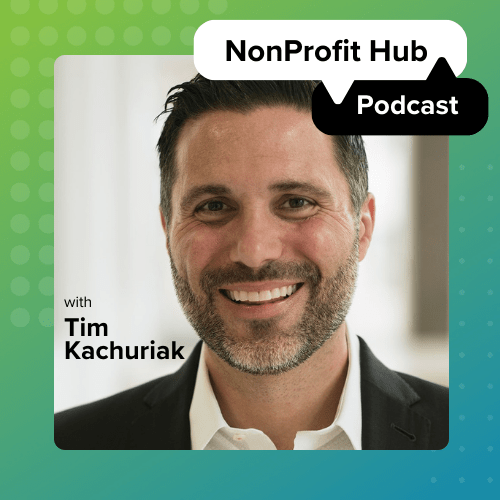Building a Board of Fundraisers
Your board is a topic that can be anxiety-inducing for many. That’s right. Your boss. Or your boss’ boss. And you’re in the unenviable position of telling them their responsibilities. But fear not, there are ways to do so that will be well-received, informative, and hopefully inspiring. And we can help you get there!
But first, let’s take the pulse of where you feel you are with respect to your board’s engagement. So, ask yourself the following:
“Are my board members…”
- Passionate about the mission?
- Understanding of their role?
- Turning up to meetings?
- Helping at events?
- Doing fundraising?
- Donating!?
The hope is you can say yes to the majority of these because these are the fundamental responsibilities of any board. And yes, of course, boards come in many shapes and sizes. Some are deeply engaged. However, some are decidedly less so. Some involve themselves in all the intricacies of the organization, and some take a very hands-off approach. But ideally, your board will be well-rounded and inspired. They should work towards your organization’s mission in partnership with staff and volunteers. If some of these primary criteria are not occurring within your board, it’s time to look at how to improve them.
Unengaged Members
Do you have current members who are unengaged? Are they not coming to meetings or not participating in the goings-on of the organization? Or are they simply not present? If so, it’s a good start to have a chat with them. It’s important to work to understand why they’ve pulled away and discuss what to do to recapture their interest. If they aren’t passionate about your mission anymore, then it’s in both your and their best interests for them to resign.
New Members
As far as new board members, that’s a larger scope. Of course, when we hire new staff, we don’t expect them to come into the role with all the knowledge of the job and exactly how to execute it. It takes weeks, months, and sometimes structured training to get them fully up to speed. So why would we treat our board members any differently? Unless they are former staff, they’ll unlikely come to you with nothing more than a surface knowledge of your organization. It’s your job to familiarize them with all the cogs and wheels that keep it running.
As the organizational leader, it will take investment to onboard (or reengage) them in such a way that they become as enthusiastic about the mission as you are. Share the stories with them. Give them a tour, and provide the opportunity to interact with your clients. Involve them in developing projects and have them sit with staff and volunteers. It’s crucial to the success of the mission to do whatever it takes to have them fully adopt what your organization is all about.
It’s not enough to just gain and hold their interest. You need to develop an authentic relationship with them. You need to understand their capacity, availability, how they prefer to work, and what level of commitment you are likely to receive from them.
So How Do You Build Your Board?
The IRS generally requires a minimum of three board members for every nonprofit. So your board should have, at a minimum, three individuals. But realistically, will your organization be truly served by so few? Are they bringing the comprehensive skill sets, the breadth of knowledge, connection, and enthusiasm your organization truly needs? Possibly, but unlikely.
Instead, the average number of board members ranges between 8 & 15. Traditionally, they are community members of high social standing. Board members are often people of significant wealth, attorneys, bankers, accountants, and local governmental leaders. But that concept is changing. Often those figureheads go from board to board, and smaller communities recycle the same individuals over and over. Will they have the same passion for your organization as all the others?
Consider thinking outside the box. You will want people with time to spare, energy, commitment, and those with connections in your community. Do not look only for people with financial means. Sure, the seasoned pros can lend invaluable advice. They also may be well versed in the intricacies of ensuring financial stability for the organization, but they’re also busy. Include board members who have a passion for enacting change. Think of individuals who have utilized your services because of their unique perspectives.
Vision & Mission
If your organization was just founded, your board will be instrumental in setting the organization’s vision and mission. But that’s not only true of fledgling nonprofits. As with all things, time and circumstances enact change, so it’s entirely possible your mission statement and vision may need to be updated. This update is not a one-person job. Take the pulse of your board at your next meeting and ask them and your staff if they feel the mission statement still holds true. If it doesn’t, there’s never been a better time than now to update and reinvigorate it. Encourage them to promote it loudly. It’s not just the staff and volunteers that need to be your biggest cheerleaders, and the board should be as well.
You wouldn’t hire an advertising organization with a slogan like, “Our organization is pretty ok. We hope you think so too,” would you? No! You want your community to be impassioned by what you do, to want to be involved, and perhaps most importantly – give. Who better to drive that message than those at the helm? This brings us to the elephant in the room.
Board Member Fundraising
Boards play notable roles in governing the organization, determining its strategic direction, and setting policies to support the collective vision. However, with everything you depend on board members to accomplish, one duty that can easily get swept under the rug is fundraising. Your board members each committed to providing your organization with the resources it needs to thrive. Fundraising is a major part of that. But it’s not a favorite among duties for many boards. However, a culture of enthusiasm for board fundraising is hugely important for supplying your organization with the resources it needs to pursue its mission.
Many boards have a minimum expected contribution amount upon joining, and some have expectations of gifting annually. However, that too is a bit of a dated model and limits board involvement to those with significant means. It’s worth considering rewriting your policy to indicate that a board member “should be giving at a level that is significant to them” rather than a set dollar amount. Not only does that create literal buy-in, but it also gives them a sense of investment.
Next, remember that your board members are busy. And fundraising can be incredibly time-consuming. So to get the most mileage out of your board fundraising, consider creating dedicated fundraising committees. In other words, subsets of the board coupled with others from your existing volunteer pool or community members at large. Again, many shy away from fundraising, so it’s not a bad idea to get creative with naming the committee. Also, think about things like “Community Engagement Committee” or “Resource Development Team.” Less scary right?
Create a realistic fundraising plan
Next, create a realistic fundraising plan in tandem with the organization’s professional staff. Hopefully, the organization already has a plan for its resource development strategies, or at least the concept of one, and the committee should strategically use it for its foundation. It’s importan to review the plan annually and find out what worked well, which goals need to be amended, and what is just not practical. And work it accordingly. It’s easy to rally the troops and get people excited, but you must carry that enthusiasm through to fruition.
Create accountability. Having a committee description, evaluations, and feedback will help keep people committed to their roles; just as with the board, keep track of committee and event attendance and follow through on commitments. If you have a committee member unable to follow through with those commitments, check in with him/her one-on-one to discuss it. Approach your board members and find out what they might need to be successful. And if it’s just not the right fit, that’s ok! Perhaps they could be involved in other ways. After all, committees can be a fantastic pipeline to create engagement in various aspects of the organization. And celebrate all the wins. Big and small.
Thank, Thank, and Thank Again
Suppose you were in this person’s shoes. Would you feel slighted if you did mountains of good work, usually unpaid without any recognition? Would you sign on for another term or encourage others to get involved? This seems unlikely.
We thank our donors. volunteers, and we should do the same for our board. They deserve recognition and consideration for all they do. When they go above and beyond, you should too when thanking them. If you haven’t been, start now. You’ll be amazed at their reaction. As always, make sure you’re doing so in a manner they would appreciate.
And in that vein, we want to thank ALL the board members out there who are fighting that good fight with us supporting their communities. You are appreciated for giving hard-earned time, finances, and knowledge to help keep these nonprofits afloat. You’re creating needed change for us all. The world is better because you’re in it.
If you’re struggling with how to engage your board, create a new one, or empower them to fundraise, please reach out to us. We can help you develop your board and plan your fundraising. We want to be a true partner in your success.







